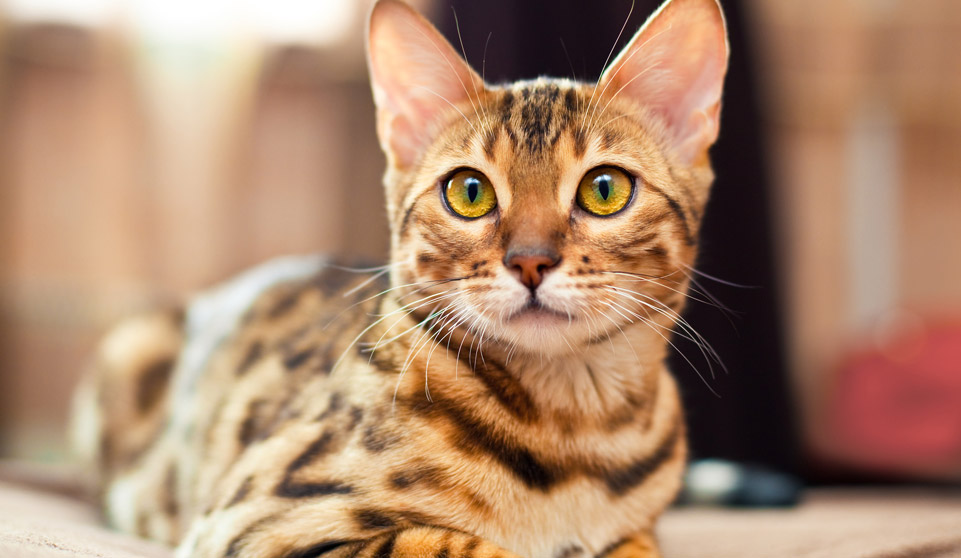Bengal Information

Characteristics
This medium to large sized, short haired cat has a wild appearance with its distinctive spotted or marbled coat.
The different coat patterns are either leopard spotted or marbled, on a background colour of brown, or sometimes white.
These sweet cats are bred to resemble their wild ancestors, yet have a loving, friendly temperament similar to any other domestic cat.
They are happiest in an environment where they get lots of attention and somewhere that caters for their high energy levels and athletic, playful nature.
Health
Average lifespan is 13 -15 years.
Illnesses with increased prevalence in this breed include;
- Cardiomyopathy – This breed may suffer from one of two common heart conditions, known as hypertrophic cardiomyopathy (thickening of the heart muscles) and dilated cardiomyopathy (thinning of the heart muscles).This can present as heart failure or sudden death.
- Progressive Retinal Atrophy (PRA)- This disease causes the receptors in the eye to deteriorate, resulting in eventual blindness.
- Cataracts – Causes the lens of the eye to become cloudy and opaque, resulting in progressive vision loss and eventual blindness.
- Inflammatory Bowel Disease Digestive problems causing frequent diarrhoea and vomiting, and may lead to dehydration. Feline IBD can usually be controlled through diet and medication.
- Feline Leukaemia – This virus is a hazard to all cats, however Bengal cats are especially prone to it. Early signs include weakness, fatigue and weight loss. As the condition worsens, cats develop fevers, tumours and seizures. Once the disease has entered the later stage, it is nearly always fatal.
- Distal Neuropathy – Neurological disease that can affect this breed.
